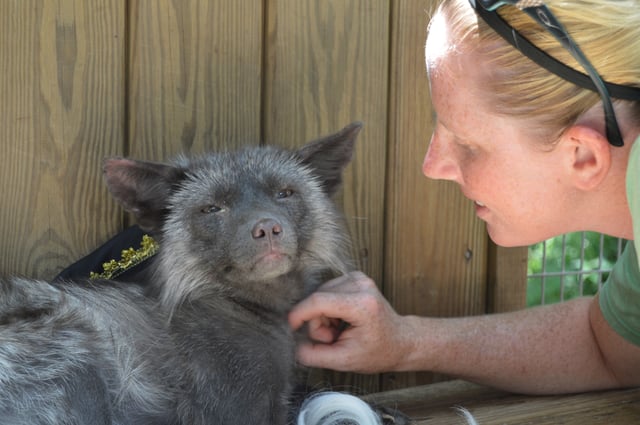
Caring and providing a safe environment for our animals is a top priority here at Wild Florida… but that entails more than just food, endless love, and a place to call home. You will likely find our animals trying to get your attention when you come to the Wildlife Park because they love to interact and play. We nurture our animals in ways that allow them to learn, grow, and demonstrate natural behaviors.
Animal enrichment toys provide animals with activities that increase their physical and mental activity levels, as well as remind them of natural behaviors, leading to a happier and healthier animal. Just like companion animals such as dogs and cats, wild animals in captivity like to be entertained and have some fun, too.
So you may be thinking, What are animal enrichment toys, exactly? Well, they’re a little different than the typical Frisbee you may be throwing at the park for your golden retriever, Buddy, to play “fetch”... (Speaking of Buddy, it’s also healthy to enrich your pets! Below we’ll share more about animal enrichment toys and how you can enrich your furry friends at home, too.)
Ready? Let’s dive in and learn more about the wildlife in Florida!To get started, there are five different categories of enrichment: sensory, feeding, manipulative, environmental, and behavioral. Here at Wild Florida, enrichment is part of the daily care of the animals.
Sensory: This type of enrichment stimulates all of the animals’ senses including visual, olfactory (smell), auditory (hearing), taste, and tactile (touch). This can include introducing the animal to smells it might encounter while hunting and mating in the wild. A few of our little guys love when we play recordings of sounds in their natural habitats. It reminds them that they’re safe under our care.
Feeding: Although we feed the animals multiple times throughout the day, we try to make feeding time amusing for the animals. Presenting food to the animal in different ways such as scattered through their habitat or with puzzle feeders encourages the animal to work and investigate the food the way they do in the wild.
Manipulative: This sounds sneakier than it is! Our animal keepers regularly incorporate enrichment toys that can be manipulated by the animal’s paws, tails, mouths, horns, etc., promoting exploratory play. Sometimes enrichment toys will contain a treat inside once the animal gets the toy open. This excites the animals to play with these kinds of toys, and they’re constantly challenging themselves.
Environmental: This type of enrichment enhances the animal’s habitat by changing and adding more active spots for the animal. This means maximizing the animal’s home here in the Wildlife Park by adding swings, climbing structures such as “monkey bars”, and hiding places for when they’re playing with the other animals or just need a different place to rest.

Behavioral: Just like humans, animals enjoy interacting with others. Our animal keepers plan social interaction for the animals in the form of training and structured play. This builds trust between the animal and humans… this is why you might notice that some animals are more obedient and loving toward a certain animal trainer. Behavioral enrichment helps connect and create a bond between humans and the wildlife.
Our animal keepers have a goal-oriented enrichment plan for each and every animal in our Gator and Wildlife Park. Our animal keepers love and care for our animals as if they were their own. The enrichment techniques used positively impact the animals and cater to their specific needs.
Don't worry – enriching your pets at home doesn’t require you to hire an animal trainer! You probably already provide your pet with more enrichment than you think… the best enrichment is spending quality time and providing your pet with lots of TLC.
Dogs are social predators, therefore you should focus on creative activities that stimulate their sensory and predatory behaviors. Ever notice how fast your pup’s tail moves when you get him a new bone or take him on a run with you? That’s because he enjoys the challenging interaction… and he loves gifts, too (who doesn’t?)
Most people can agree that dogs and cats are very different. Dogs are more like the goofy class clown, and cats are more vigilant with highly-developed senses. Cats are always observing and moving around. Toys that provide movement, like a feather chaser, are great for them. (In case you're wondering, although catnip isn’t considered an enrichment toy, it’s still a kind of enrichment because the scent amazes and excites them.)
If you're an animal lover and playing with your pets at home just isn't enough, you can book an animal encounter or even become a keeper for the day. Enrichment activities are a part of our animal keepers every day tasks, so you'd get to be a part of all the types of enrichment we just mentioned!





